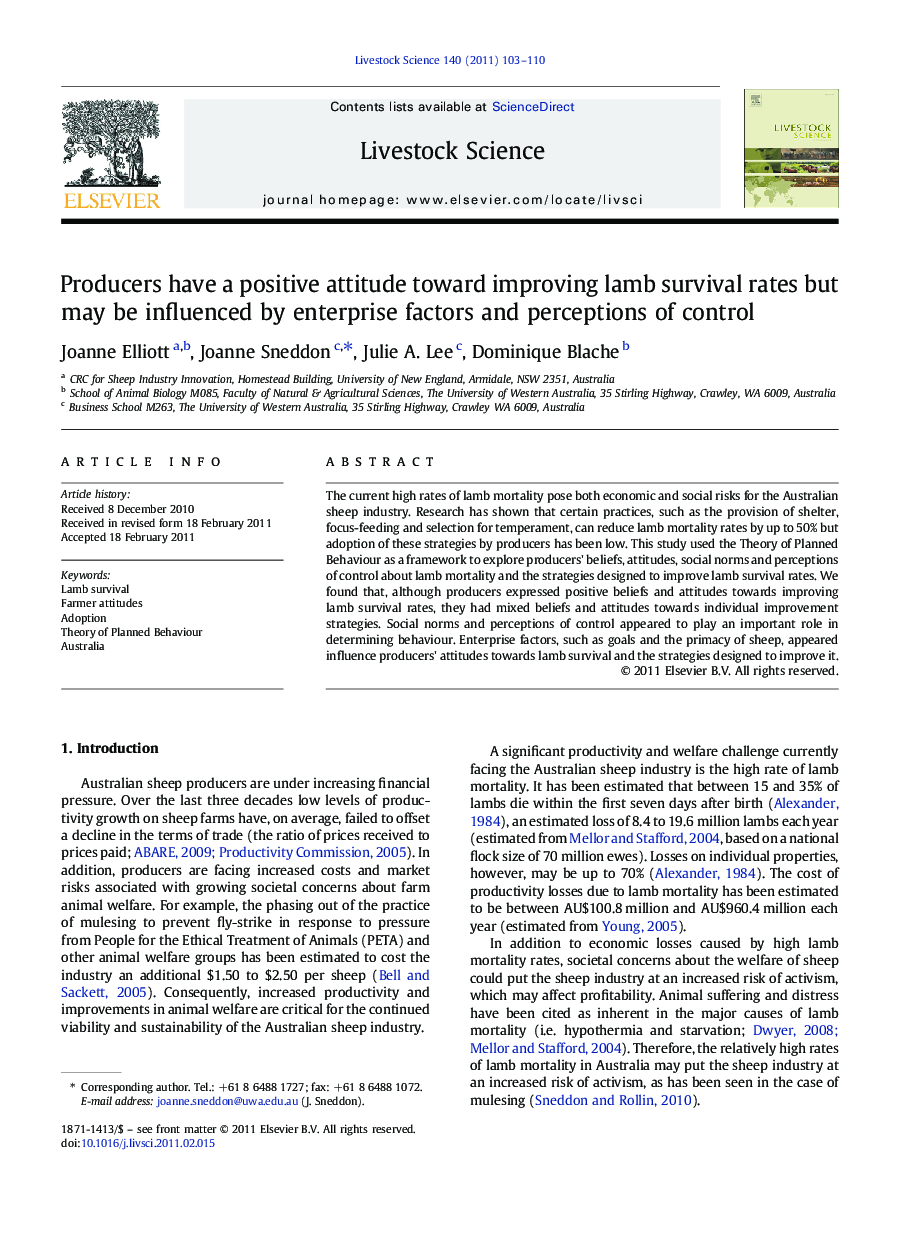| Article ID | Journal | Published Year | Pages | File Type |
|---|---|---|---|---|
| 5790884 | Livestock Science | 2011 | 8 Pages |
Abstract
The current high rates of lamb mortality pose both economic and social risks for the Australian sheep industry. Research has shown that certain practices, such as the provision of shelter, focus-feeding and selection for temperament, can reduce lamb mortality rates by up to 50% but adoption of these strategies by producers has been low. This study used the Theory of Planned Behaviour as a framework to explore producers' beliefs, attitudes, social norms and perceptions of control about lamb mortality and the strategies designed to improve lamb survival rates. We found that, although producers expressed positive beliefs and attitudes towards improving lamb survival rates, they had mixed beliefs and attitudes towards individual improvement strategies. Social norms and perceptions of control appeared to play an important role in determining behaviour. Enterprise factors, such as goals and the primacy of sheep, appeared influence producers' attitudes towards lamb survival and the strategies designed to improve it.
Related Topics
Life Sciences
Agricultural and Biological Sciences
Animal Science and Zoology
Authors
Joanne Elliott, Joanne Sneddon, Julie A. Lee, Dominique Blache,
